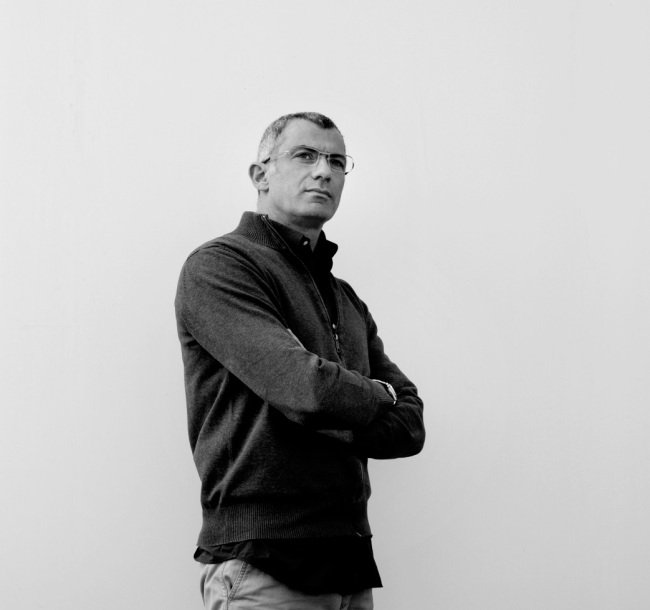[Design Forum] Narrow cultural gap through design: industrial designer Levy
By 박형기Published : Nov. 8, 2015 - 11:32
Arik Levy, a world-renowned industrial designer, said Korea’s design sector should keep working toward narrowing the communication and cultural gap between people.

In an interview with The Korea Herald, Levy said that this would take some time to develop using art and technology. But given Korea’s rapid progress in the field of design arts and technology, he said the country would be able to take that challenge.
Best known for his signature “Rock” sculptures, the designer said he is driven by “instinct and noncontrolled muscles” for unconventional creativity in a wide range of goods from furniture to lighting products.
However, he stressed that design is foremost about working with a team of multitalented people with diverse backgrounds and encouraging them and the public to realize their dreams. Based in Paris, Levy gained numerous recognitions for his art and design. The following is an excerpt of the interview.
KH: Where is the boundary between art and commercial? In your earlier days, did you experience any dilemma over the art-commercial balance?
Levy: No dilemma. Both are great. Art is art, and design is design -- the intelligent, emotional, subliminal, metaphoric geopolitical and financial crossovers are a fine line to play, use and work with. The blurred part of the boundaries is not in what it is but in where and how we look at it.
The other issue is that both words “art” and “design” have a much wider, complex and vast meaning, usage and expression in our daily life.

KH: What makes a good design, or a good designer? Has the concept changed?
Levy: Well, yes and no. No for design, due to the fact that good design answers the questions of the brief, of the industry, of the society, of the environment and addresses all issues.
Yes for the designer: working habits and communication have evolved in a radical way, the world is smaller and info travels faster than ever. This forces the designer to be very alert and on top of things. Capture, communicate, connect, initiate, analyze and react.
KH: What is the most impressive design project that you have accomplished so far?
Levy: The most impressive is my own studio. The most difficult thing is not creating a product but creating a community, having people who work with you happy and motivated daily to realize their dream with me. The world is about people, and that is a key.
KH: Any ongoing ones that you may share with us?
Levy: There are many ongoing projects (luckily) and in a mix of fields, from lighting and furniture to toys and innovation -- office environment, home and hospitality.
KH: You have worked in a number of fields, varying from furniture, fashion, electronic goods, artistic objects, etc. If you were to limit yourself to a single one, what would it be?
Levy: I am a creative persona and directed by noncontrolled muscles and instinct. It is part of my DNA, and selecting one does not really work. This is also the way I look at what I do and the world of creativity.
KH: You have collaborated with several Korean brands. What do you think are the strengths and challenges of Korean companies in general?
Levy: Indeed over the last 10 years or so, I have had many meetings and encounters with the Korean industry. I think it is amazing looking at the last 30 years of progress and position in a world that reminds me of Israel.
I believe the challenge is in the communication and cultural gap -- process needs time, as well as mutual development and continuity. I love working with Korean companies and am very happy to continue and discuss every opportunity.
KH: Is there a specific Korean firm that you wish to collaborate with in the future?
Levy: I would like to collaborate with a company that will open the door to a long-term collaboration; continuity and mutual development. The subject matter of the company is not the most important. I am happy to design a TV set, a car, an interior, a product and all other design categories. It is the commitment and engagement that will lead.
By Park Hyong-ki (hkp@heraldcorp.com)









![[Kim Seong-kon] Democracy and the future of South Korea](http://res.heraldm.com/phpwas/restmb_idxmake.php?idx=644&simg=/content/image/2024/04/16/20240416050802_0.jpg&u=)







![[KH Explains] Hyundai's full hybrid edge to pay off amid slow transition to pure EVs](http://res.heraldm.com/phpwas/restmb_idxmake.php?idx=652&simg=/content/image/2024/04/18/20240418050645_0.jpg&u=20240418181020)

![[Today’s K-pop] Zico drops snippet of collaboration with Jennie](http://res.heraldm.com/phpwas/restmb_idxmake.php?idx=642&simg=/content/image/2024/04/18/20240418050702_0.jpg&u=)